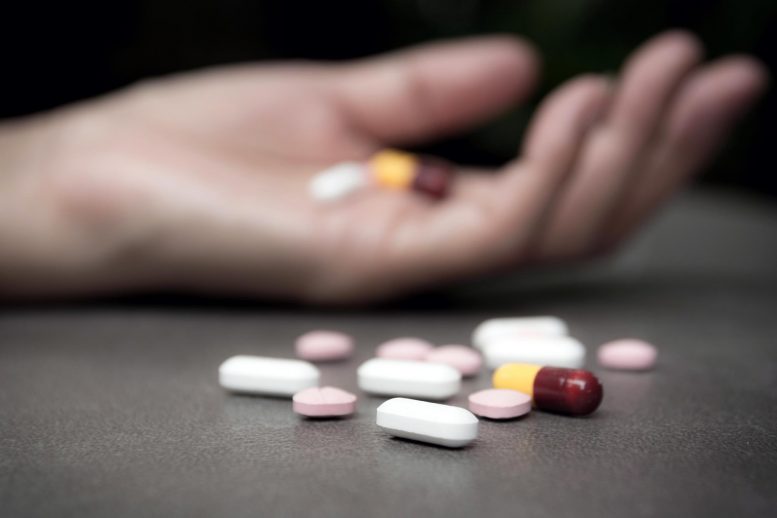
The U.S. saw a significant rise in adolescent drug overdose deaths in 2022, primarily due to fentanyl-laced counterfeit pills, despite a decline in overall teen drug use. Research suggests focused educational efforts, policy intervention in high-risk areas, and increased access to naloxone in schools as critical measures to combat this escalating crisis.
In 2022, the United States witnessed the deaths of approximately 22 teenagers aged between 14 and 18 every week due to drug overdoses, with the mortality rate for this demographic increasing to 5.2 per 100,000. This surge has been attributed to the prevalence of fentanyl-laced counterfeit pills, according to recent studies.
Adolescent overdoses had more than doubled among this group between 2019 and 2020, and have since intensified to such an extent that the death count equals a high school classroom each week, and is now the third largest cause of pediatric deaths behind firearm-related injuries and motor vehicle collisions.
The Role of Fentanyl and Counterfeit Pills
The increase is, however, not due to more illicit drug use – which has in fact fallen over the years; for example, excluding cannabis, the rate of any illicit drug use among just 12th graders had fallen from about 21% to 8% in the 20 years since 2002. Instead, the increase is the result of drugs becoming deadlier due to fentanyl, which is increasingly found in counterfeit oxycodone, benzodiazepines, and other prescription pills that fall into the hands of adolescents.
But educators, physicians, and mental health practitioners can be instrumental in helping to stem this tide through pointed questions and guidance about drug use and the dangers that counterfeit pills present, the researchers write in a paper published in the New England Journal of Medicine. In addition, policymakers can focus on “hotspot” counties, most in western states, with particularly high overdose deaths.
“Teenagers are likely to be unaware of just how high-risk experimenting with pills has become, given the recent rise in counterfeit tablets,” said study co-author Joseph Friedman, a researcher at UCLA. “It’s often impossible to tell the difference with the naked eye between a real prescription medication obtained from a doctor and a counterfeit version with a potentially deadly dose of fentanyl. It’s urgent that teenagers be given accurate information about the real risks, and strategies to keep themselves and their friends safe.”
The researchers found that adolescent overdoses were occurring at double the national average in Arizona, Colorado, and Washington State between 2020 and 2022. They identified 19 hotspot counties – that is, those with at least 20 overdose deaths and death rates higher than the national average, with Maricopa County in Arizona and Los Angeles County having the most fatal overdoses at 117 and 111, respectively, during this period.
The other 17 counties are Orange County, California (61 deaths), Cook County, Illinois (56), San Bernardino County, California (54), King County, Washington (52), Riverside County, California (41), San Diego County, California (36), Tarrant County, Texas (35), Clark County, Nevada (31), Kern County, California (30), Pima County, Arizona (29), Adams County, Colorado (25), Denver County, Colorado (24), Jackson County, Missouri (24), Santa Clara County, California (24), Bernalillo County, New Mexico (23), Davidson County, Tennessee (21), and Marion County, Indiana (21).
In addition, American Indian and Alaska Native adolescents had 1.82 times the overdose rates of whites between 2020 and 2022. And adolescents are overall likelier to use the pill form of the drug rather than powder, which was previously the main fentanyl source. For instance, while 0.3% of high school seniors in 2022 reported using heroin, which comes in powder form, 5% reported nonmedical use of prescription pills the same year.
Recommendations for Prevention and Education
The researchers provide the following recommendations to combat these trends:
- Pediatricians, other primary care physicians, and mental health practitioners should ask their adolescent patients if they or their peers were approached either in person or via social media about buying pills, or if they have used them without prescriptions
- Educators, along with parents, can discuss with adolescents the dangers associated with counterfeit pills; these efforts should be especially prioritized in hotspot locations
- Clinicians, educators, and parents can highlight the Safety First curriculum that emphasizes abstinence from drugs and provides information about risk reduction for those who do experiment with drugs, such as where to find and how to use the overdose-reversal agent naloxone
- Finally, naloxone should be available in schools, which should also adopt “no-questions-asked” pill-disposal programs as well as provide anonymous mechanisms such as messaging services that students can use to ask about counterfeit pills and substance use without risk of punishment or embarrassment.
“Fentanyl has rapidly become a leading cause of death in American teens,” said Dr. Scott Hadland, chief of adolescent medicine at Mass General for Children and senior author on the paper. “Policymakers, clinicians, families, and communities need to partner together to address this worsening public health threat.”
Reference: “The Overdose Crisis among U.S. Adolescents” by Joseph Friedman and Scott E. Hadland, 5 January 2024, New England Journal of Medicine.
DOI: 10.1056/NEJMp2312084









The advice would be funny if it wasn’t leading to deaths. Zero tolerance and communicating abstinence education is the D.A.R.E. program of the 1980s and 1990s, which studies found to be counter-productive. No deficit in the application of the researchers’ recommendations is causing deaths, apart from maybe naloxone availability, which is only a highly-effective bandaid while someone lay dying after regulatory catastrophic failure.
What causes the deaths? Fentanyl, according to the article. The immediate answer is to ban the fentanyl, but prohibition of “counterfeit oxycodone, benzodiazepines, and other prescription pills” has not made them safer, but instead “the (deaths) increase is the result of drugs becoming deadlier due to fentanyl”, which was also prohibited. Instead, the drug war has led us here. This is a political article, written by or for doctors whose concern is “counterfeit pills”; the pills are real, but illicit, and an unaccountable black market can lead to impurities.
Politically, as much as I’d like to ban the problem and educate anyone at risk, the evidence of children increasingly dying must make us reassess our strategy and find others. Free safe-supply doesn’t seem to be working either, but free testing drugs for impurities does seem to work, catching the regulatory failure after purchase but before ingesting the drug. Is there a way to catch the failure even earlier, during the purchase, or the distribution, or even the manufacturing? How about a way to keep these products out of the black market and into regulatory control, to stop the failure before it starts?
Something to be considered is that the US suicide rate has been increasing in recent years, approaching the level of what is seen in Japan. Perhaps a significant fraction of the fentanyl overdose deaths aren’t accidental, instead being intentional suicides.